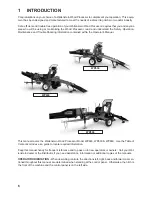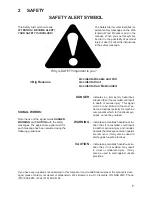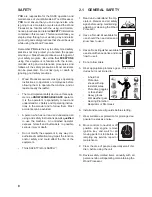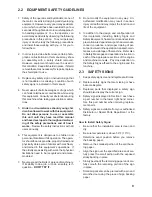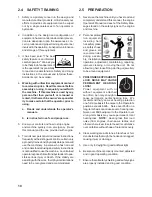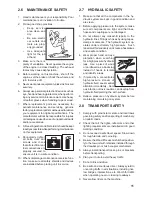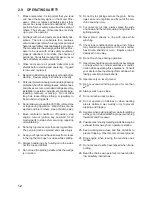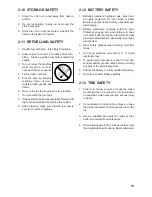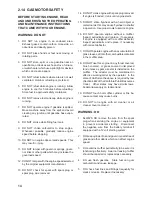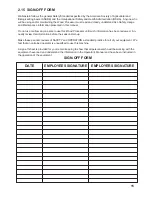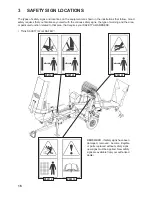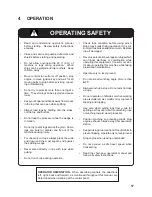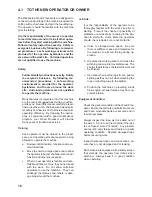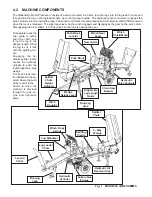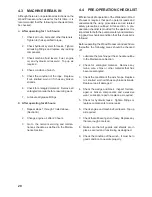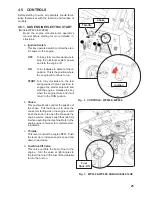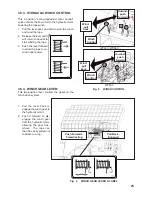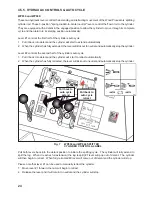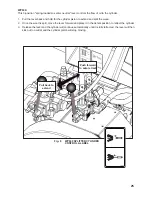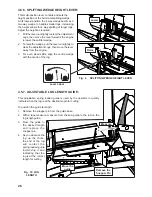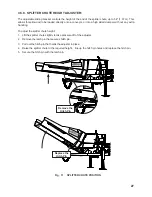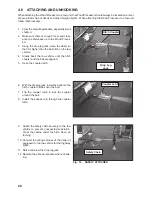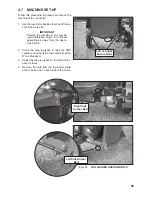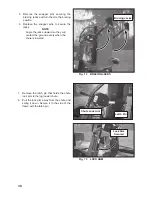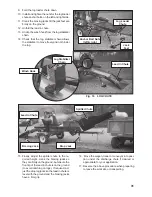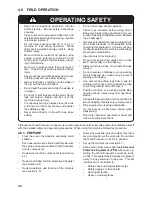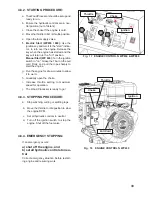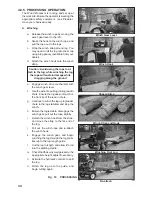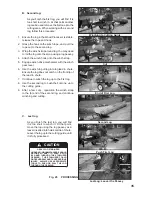
20
4.3 MACHINE
BREAK-IN
Although there are no operational restrictions on the
Wood Processor when used for the first time, it is
recommended that the following mechanical items
be checked:
A.
After operating for 1 to 5 hours:
1. Check all nuts, bolts and other fasteners.
Tighten to their specified torque.
2. Check hydraulic system for leaks. Tighten
all leaking fittings and replace any leaking
components.
3. Check machine fluid levels: Fuel, engine
oil, and hydraulic oil reservoir. Top up as
required.
4. Check condition of winch.
5. Check the condition of the rope. Replace
if cut, knotted, worn or if it has any broken
strands.
6. Check for entangled material. Remove all
entangled material before resuming work.
7. Lubricate all grease fittings.
B.
After operating for 20 hours:
1. Repeat steps 1 through 7 listed above.
(Section
A)
2. Change engine oil after 20 hours.
3. Go to the normal servicing and mainte-
nance schedule as defined in the Mainte
-
nance Section.
4.4 PRE-OPERATION CHECKLIST
Efficient and safe operation of the Wallenstein Wood
Processor requires that each operator reads and
understands the using procedures and all related
safety precautions outlined in this section. A pre-
operation checklist is provided for the operator. It is
important for both the personal safety and maintain-
ing good mechanical condition that this checklist is
followed.
Before operating the Wood Processor and each time
thereafter, the following areas should be checked
off:
1. Lubricate the machine per the schedule outline
in the Maintenance Section.
2. Check for entangled material. Remove any
twine, wire, chips or other material that has
become entangled.
3. Check the condition of the winch rope. Replace
cut, knotted, worn or if it has any broken strands.
Replace rope if damaged.
4. Check the wedge and block. Inspect for dam-
aged or broken components and excessive
wear. Lubricate, repair or replace as required.
5. Check for hydraulic leaks. Tighten fittings or
replace components to stop leaks.
6. Check engine and machine fluid levels. Top up
as required.
7. Check that all bearings turn freely. Replace any
that are rough or seized.
8. Make sure that all guards and shields are in
place, secured and functioning as designed.
9. Check the condition of the winch. It must be in
good condition to operate properly.

